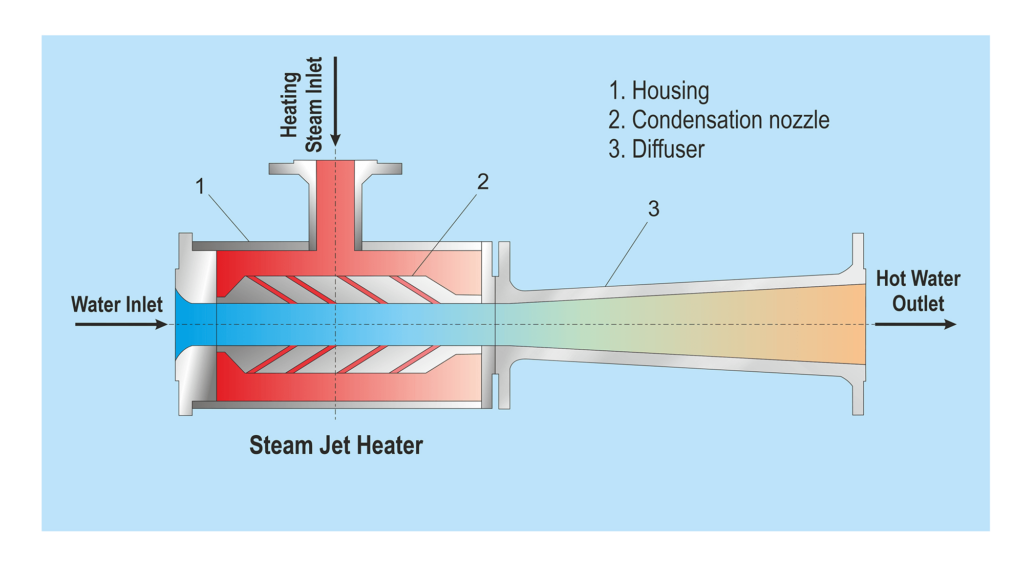Jet Heater
Jet Heater
Utilize condensable vapors in heat transfer applications
A jet heater is not an ejector at all, even though it may resemble one externally. Jet heaters provide no pressure increase across the unit. are used to heat fluids in pipelines and tanks. Jet Heaters accomplish heat transfer by direct injection of steam or other condensable vapors into a process fluid that is chemically compatible; this steam or vapor condenses in the liquid stream, imparting its heat value. This type of unit is installed directly in-line or in-tank with a liquid stream, with an inlet for heating steam.
About Jet Heater
Advantages
- No chemicals or refrigerants
- No absorption solutions or lubricants for operation
- lower operating costs
- Reliable, consistent service and output
- No moving parts
- Low initial cost (compared to mechanical pumps)
- Minimal maintenance cost (compared to mechanical pump)
- Easy to operate and maintain
- Easy to retrofit or upgrade
- Long lasting and durable equipment
- Can be constructed from a wide variety of steel, alloy, or high alloy

Superheated steam enters the venturi desuperheater at certain velocity range. A small fraction of the flowing steam enters the venturi in the desuperheater, speeds up to create a reduced-pressure zone into which spray water is drawn and atomized by steam energy, and then exits in a short expanding throat which allows pressure recovery. Cooling water enters the nozzle at low velocity which forms a thin film. The dynamic energy of the steam flow breaks the surface tension of the film since there is a very high differential velocity between steam and water which results in high shear and turbulence that are extremely effective in ensuring excellent desuperheating performance. The venturi water nozzle, generally made in stainless steel, is a converging-stabilizing-diverging nozzle which promotes the turbulent mixing of atomized water and steam thus maximizing efficiency in a wide range of process conditions. Pressure drop on steam side is negligible. Water pressure at the inlet of the desuperheater should be at least 2 bar higher than steam inlet pressure.
- Oil and Gas – refinery processes, product distillation and more
- Food and Beverage – product crystallization, evaporation and more
- Pulp and Paper – product crystallization, evaporation and more
- Water Treatment and Desalinization – product crystallization, evaporation and more
